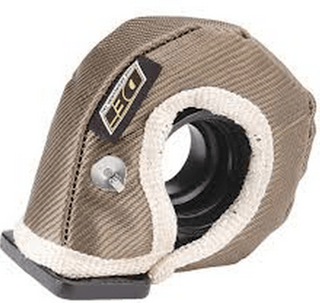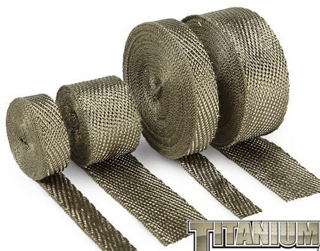 Horsepower Gains | Heat is our friend. Heat is our enemy.
Horsepower Gains | Heat is our friend. Heat is our enemy.
In a turbocharged car, heat is what drives the turbo. The hotter you can keep the exhaust gases, the higher the pressure and faster it flows, the more power we make. "But wait!", you say. "I always heard colder is better for power."
It is! On the other side of the engine. A motor wants really cold intake air so it can make the most power.
So there is our problem. We need to keep the exhaust as hot as possible without melting anything and we need to keep the intake as cold as possible. All the heat comes from the exhaust, so we can't let any of it get to the intake. Our answer is to insulate the exhaust.
There are many ways to keep the heat in. The factory exhausts are covered in metal heat shielding and utilize air gaps to prevent heat transfer to other parts of the motor. These air gaps also allow airflow to keep overall temperatures under control.
Turbo Heat Wraps | One of the first things we do to modify a car is put larger exhaust piping on it. When we install a 3" pipe in place of a factory 2" pipe, we lose a lot of space. This means no more air gaps. A metal heat shield won't be very affective without the air gap to act as an insulator.
We have two solutions to addressing heat and keeping temperatures in check so you can get back to performance driving.
- Option 1: We can thermally coat the pipes with a ceramic based paint.
When properly applied and cured, a layer of ceramic material is bonded to the pipe. This layer is very thin, but is able to insulate a tremendous amount of heat.
- Option 2 is to add thermal heat wrap. These wraps are made of fiberglass, nomex, kevlar, and other exotic materials. Some include volcanic pumice suspended in the weave of the fabric.
 A single layer of wrap is much thicker than a layer of ceramic coating and as the wrap is put on the pipe, it overlaps itself creating up to 3 layers on the pipe.
A single layer of wrap is much thicker than a layer of ceramic coating and as the wrap is put on the pipe, it overlaps itself creating up to 3 layers on the pipe.
Heat wrap is a better insulator than a ceramic coating, but needs more clearance to surrounding components.
- So which one do we use and where?
Heat wrap has a significant flaw in its design that the ceramic coating doesn't have to deal with. If any fluids from the engine leak onto the wrap, the fabric material will act as a wick.
If the exhaust is hot enough, almost any fluid can hold a flame. I have personally see engine coolant leak onto a hot exhaust manifold that had heat wrap on it, and light on fire. The water in the coolant was quickly boiling away leaving the glycol, which lit on fire and burned the engine.
For this reason, I don't usually recommend wrap on exhaust pipes that are under the engine.
There are also products called blankets. These are made of similar material to the wrap, but are pre-formed into shapes that fit turbine housings, or whole pipes.
The turbo blankets fit snugly over the turbine housing. They do an amazing job of insulating the heat and can keep engine bay temps down by over 50 degrees.



